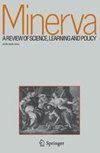护理专业人员应用 SBAR-SAER 技术
IF 3.2
2区 哲学
Q1 EDUCATION & EDUCATIONAL RESEARCH
引用次数: 0
摘要
本研究分析了护理人员对SBAR-SAER技术的应用情况。这是一个定量的、描述性的、非概率样本的横断面调查。它们被应用于厄瓜多尔安巴托一家医院的154名护理专业人员。主要结果表明,大多数护理专业人员都知道这种方法可以在负责患者护理连续性的专业人员之间传递信息。此外,还确定了使用该工具的几个因素,如患者安全性、有效性和沟通便利性。最后,在医院的护理专业人员中,SBAR-SAER的应用比例很高。本文章由计算机程序翻译,如有差异,请以英文原文为准。
Application of the SBAR-SAER technique by the nursing professional
The present study analyzed the application of the SBAR-SAER technique by nursing professionals. This was a quantitative, descriptive, and cross-sectional investigation with a non-probabilistic sample. They were applied to 154 nursing professionals from a hospital in Ambato, Ecuador. The main results show that most nursing professionals know this method for transferring information between professionals in charge of the continuity of patient care. In addition, several factors were identified for using this tool, such as patient safety, effectiveness, and ease of communication. Finally, there is a high rate of SBAR-SAER application among the hospital's nursing professionals.
求助全文
通过发布文献求助,成功后即可免费获取论文全文。
去求助
来源期刊

Minerva
Multiple-
CiteScore
5.20
自引率
4.30%
发文量
26
期刊介绍:
Minerva is devoted to the study of ideas, traditions, cultures and institutions in science, higher education and research. It is concerned no less with history than with present practice, and with the local as well as the global. It speaks to the scholar, the teacher, the policy-maker and the administrator. It features articles, essay reviews and ''special'' issues on themes of topical importance. It represents no single school of thought, but welcomes diversity, within the rules of rational discourse. Its contributions are peer-reviewed. Its audience is world-wide.
 求助内容:
求助内容: 应助结果提醒方式:
应助结果提醒方式:


